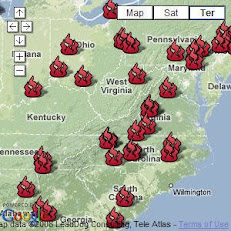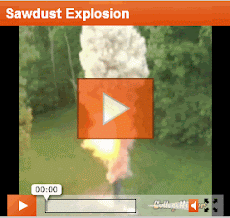Workplace combustible dust related fires and explosions occur with alarming regularity in the global grain, mining, forestry and manufacturing sectors. Although the majority of incidents do not result in fatalities, injuries, or property damage, historically many of these non-consequential incidents have been precursors to catastrophic events.
The complex topic of combustible dust hazards recently came to the forefront in British Columbia when WorkSafeBC issued a directive order for all sawmills to conduct a comprehensive risk assessment resulting in an effective dust control program.
In conjunction with FireWise Consulting Ltd., John Astad, Director and Research Analyst from the Combustible Dust Policy Institute (CDPI) will be presenting a series of one day Combustible Dust Hazards Awareness Workshops throughout British Columbia. The goal of the CDPI is to minimize the severity and reduce the occurrence of combustible dust related fires and explosions through research of combustible dust related incidents. For more information on the CDPI view brochure here.
The Combustible Dust Hazards Awareness Workshop will provide stakeholders with the knowledge to minimize the probability of occurrence and severity of consequence of future combustible dust related incidents. In addition the workshop will assist stakeholders in developing a comprehensive dust control program as noted in the revised WorkSafeBC OHS Guidelines. Key aspects of the workshop are identifying, evaluating, and controlling combustible dust hazards in addition to providing guidance in conducting facility inspections and risk assessments.
Facility owners and managers concerns in reducing the probability of a catastrophic secondary dust explosion include good housekeeping, employee training, maintenance, and management of ignition sources. Prevention of future incidents begins with awareness of the problem and a robust hazard mitigation framework which consists of a facility risk assessment, written combustible dust program, and hazard communication.
This combustible dust workshop will discuss the importance of these topics and more in addition to the BC Fire Code referencing the National Fire Protection Association (NFPA) combustible dust standards. NFPA best industry practices include engineering controls for deflagration suppression, deflagration isolation, and explosion venting in the mitigation of combustible dust explosions. The NFPA 664 Standard for the Prevention of Fires and Explosions in Wood Processing and Woodworking Facilities provides excellent guidance in this area and is a key resource for the workshop. Click here for a detailed course outline.
COURSE DETAILS
June 11, 2012 Prince George
June 12, 2012 Williams Lake
June 14, 2012 Vernon
June 18, 2012 Port Alberni
June 19, 2012 Township of Langley
Time: 0800 to 1600
Registration Fee: $149.00 plus tax (includes lunch)
Register on-line by clicking on the FireWise Consulting Registrations link or register by mail, e-mail or fax by printing and filling out the form at the following link: Registration Form









 RSS Feed Subscribe
RSS Feed Subscribe